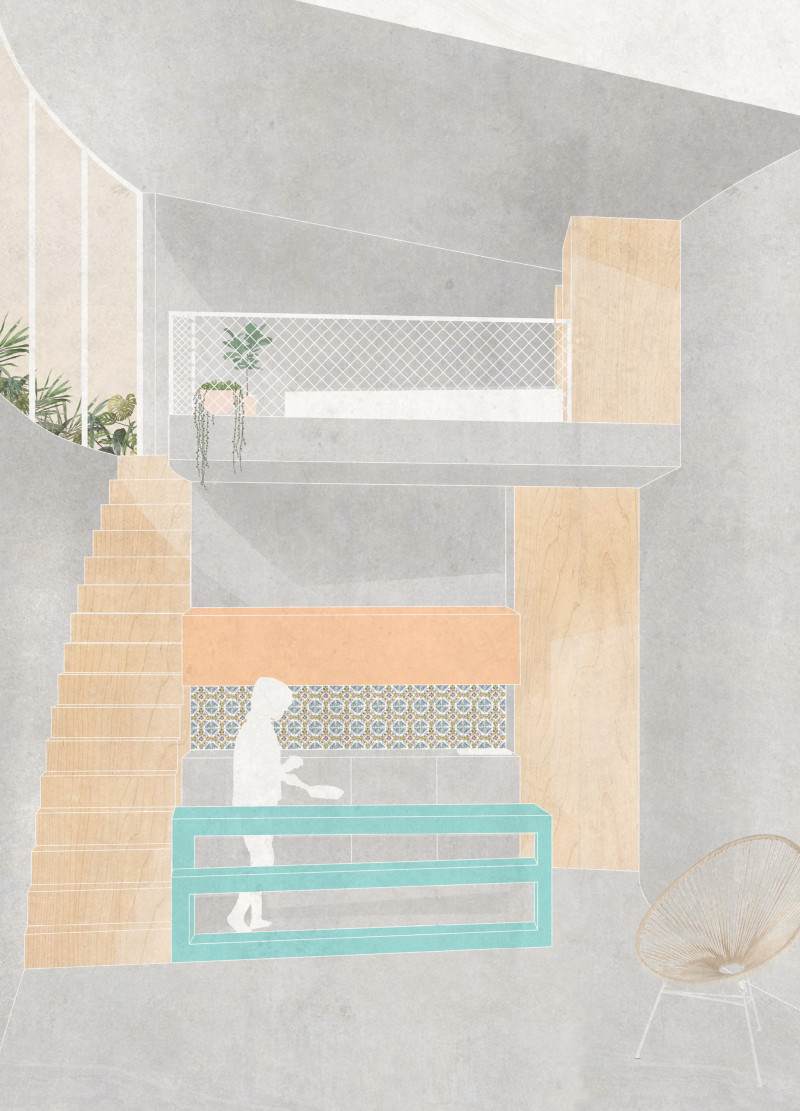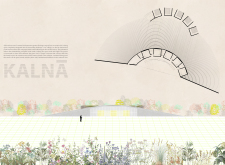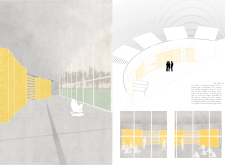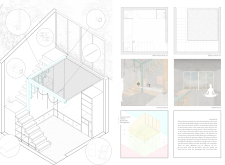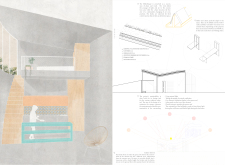5 key facts about this project
Kalnā is an architectural project that focuses on creating living spaces in harmony with the surrounding landscape. The design emphasizes the connection between built structures and nature, aiming to enhance the user experience. The project includes several key elements: a green roof that links various spaces, individually designed cabanons for quiet reflection, and a multifunctional yellow wall that serves as an anchor for communal activities.
Green Roof
The green roof is a central feature that connects different structures within the project. It serves not only as a living surface but also as a means to enhance local biodiversity. By raising the living spaces, the roof provides insulation and allows occupants to maintain a closer relationship with nature. This aspect reinforces the commitment to sustainability in the overall design.
Cabanon
The cabanon serves as a minimalist living area, specifically designed for poets. It is organized vertically, with essential living functions on the ground floor and a dedicated mind space above. This upper area allows for contemplation and engagement with the surroundings. Sliding windows provide access to the green roof, inviting fresh air and natural light, and creating a direct connection to the outdoors.
Yellow Wall
The yellow wall plays a vital role in defining the common area. Its modular design includes niches, libraries, and a kitchen, providing a flexible space for various activities. Six sliding panels allow for different setups, making the area suitable for cooking, dining, reading, or practicing yoga. This interaction emphasizes the importance of communal space while addressing individual needs.
Bibliotheque
The bibliotheque is designed as a series of planes and voids, promoting light and air circulation. This layout encourages creativity and engagement with literature. The design values books as both content and spatial elements. Foldable furniture in this area enhances flexibility, enabling quick changes in setup based on the activities taking place.
The careful arrangement of spaces and thoughtful details invite occupants to engage with the environment. Each element encourages moments of reflection and connection, revealing a design that prioritizes living in harmony with nature.


